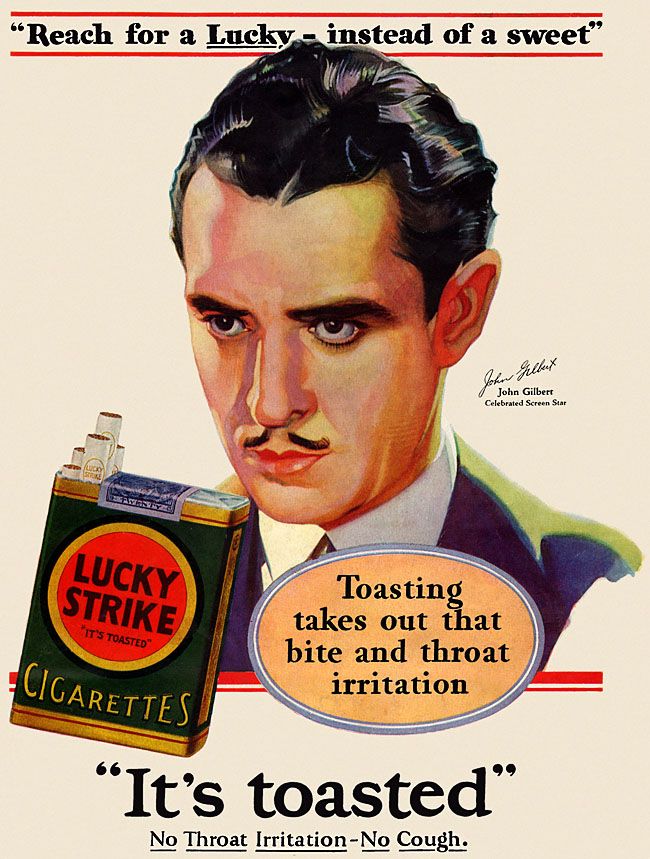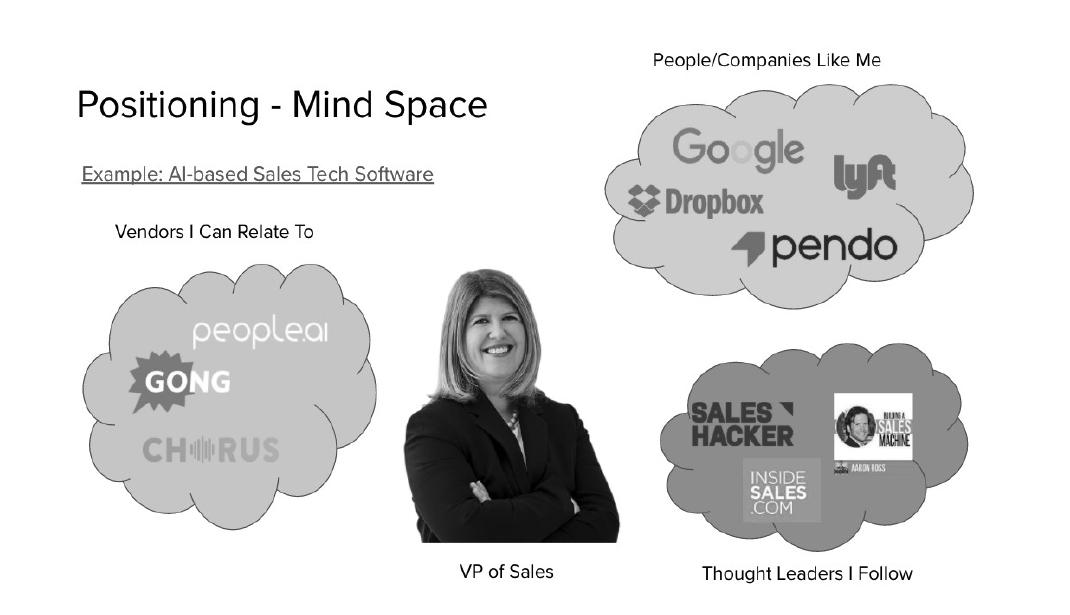Get Inside the Mind of your Buyer & Stay There!

Positioning is how you carve a place of influence in your buyer's mind.
The TV series, Man Men captures this best, in one of the most striking examples of positioning ever depicted on screen. As the Creative Head of an advertising firm, the show's protagonist, Don Draper, is charged with repositioning cigarettes for a major client, Lucky Strike, when Big Tobacco companies were under considerable fire. There was growing medical evidence that cigarettes were injurious to health and fatal in many cases. To comply with FDA regulations, tobacco companies had to work on messaging that refrained from mentioning any health benefits associated with cigarettes. While Lucky Strike did not have any differentiating element when compared to any of its competitors, Don Draper focused on Lucky Strike's buyer. He honed in on one part of their manufacturing process: the toasting of tobacco leaves to dry and cure them. He then came up with a simple tagline that said, "It's Toasted."

Here's why this was a stroke of genius:
- He understood that the cigarette buyer prioritized personal freedom and guilt-free "happiness." He found a position in the buyer's mind that was tied to the smell of sitting in a brand-new car.
- By saying that it was “toasted” (which all cigarettes were, but wasn't a well-known fact), Draper created a perception that sidestepped the health hazards.
- Using the call-out "It's Toasted", Draper also gave Lucky Strike the first-mover advantage. Any competitor who'd come out and say that their cigarette was toasted too would only appear to be emulating and not the pioneer.
- The “toasting” done by Lucky Strike became an attribute that was now part of the cigarette buyer's bias, and the individual would choose their cigarette over another competitor's owing to the heuristics involved.
Once this position was firmly embedded in the cigarette buyer's mind, could Lucky Strike not have charged a premium for their products? No other brand could elicit a feeling of freedom like Lucky Strike could. The point being made is that pricing is inextricably tied to positioning. The stats say it all - 64% of buyers who feel a high connection with a brand are more willing to pay a premium price for its products and services, according to Gartner.
Here’s using an example from a more familiar scenario. Let's assume for a moment that you are responsible for positioning a new AI-based Sales Productivity software targeting a tech company VP of Sales as your buyer persona. How would you get inside this VP of Sales’ head? How will you 'position' yourself and the software?
You’ll leverage heuristic thinking.
In his seminal work, Thinking Fast and Slow, Nobel Laureate Daniel Kahneman highlights two systems - System 1, which is heuristic, and System 2, which is analytical. A heuristic mindset is like muscle memory for the brain. It enables us to develop micro-second preferences and biases. It's what tells us that an Apple iPhone is a premium product, while an Android phone isn't. It's what makes us hold a BMW in higher esteem in comparison to a Honda, which isn't viewed as a premium product. As the buyer in these cases, we are pegging these products and brands a certain way before taking into consideration the horsepower in a car or the storage capacity of a phone.
Coming back to our example, if you approached the VP with a pitch for your product, she will run a few heuristics to figure out how to perceive your product. There could be three possible heuristics:
- Vendors she can relate to
- What do people like her at companies similar to hers think?
- Views of thought leaders whom she follows

While there are thousands of companies in the Sales Tech space, a few companies are seen as the most prominent related to AI. The comparison for your offering will be against these popular companies and their offerings. The VP may compare your company to Gong, People.ai, and Chorus (see Figure 3).
Apart from the prominent competitors, the VP would also consider what the counterparts in her space, and the people in her network with similar needs, are looking at. She would also make note of the opinions of thought leaders in this space, and insights from popular podcast platforms such as Sales Hacker or Inside Sales to help guide her decision.
Once we understand the buyer and their mind space, we can then think about how to find our own niche in that mind space. There are many questions that arise. (a) Is your product a 'tool/widget,' or is it a 'platform'? (b) Is it a vitamin or a painkiller? (c) How is it uniquely different compared to available alternatives?
This Forbes article provides a basic, but sound formula on how to arrive at your positioning, “(Your company) is where (X audience) comes to find (Y service) in order to accomplish (Z goal).”
What you want is for your buyer to recognize your product as one that solves a particular problem in a differentiated way. Simple as it seems, the truth is that most pricing problems aren't pricing problems. In fact, they are rarely pricing problems. They are just the causal impact of poorly understood and/or communicated positioning of a product leading to a lack of conviction and a whole host of downstream issues.
Always ask these three essential questions to be clear about your positioning:
- Do we know who our target customer is?
- What benefit(s) do we bring to her/him?
- How do we solve her/his problems uniquely better than other alternatives?
—-----------------------------------------------------------------------------------------------
This is an edited excerpt from author, Ajit Ghuman’s book Price To Scale. Available now on Amazon.com.
Image Credits: 1) https://archive.org/details/LuckyStrikeCigarettes1929B
2) As seen on Pg 15 of the book Price To Scale
